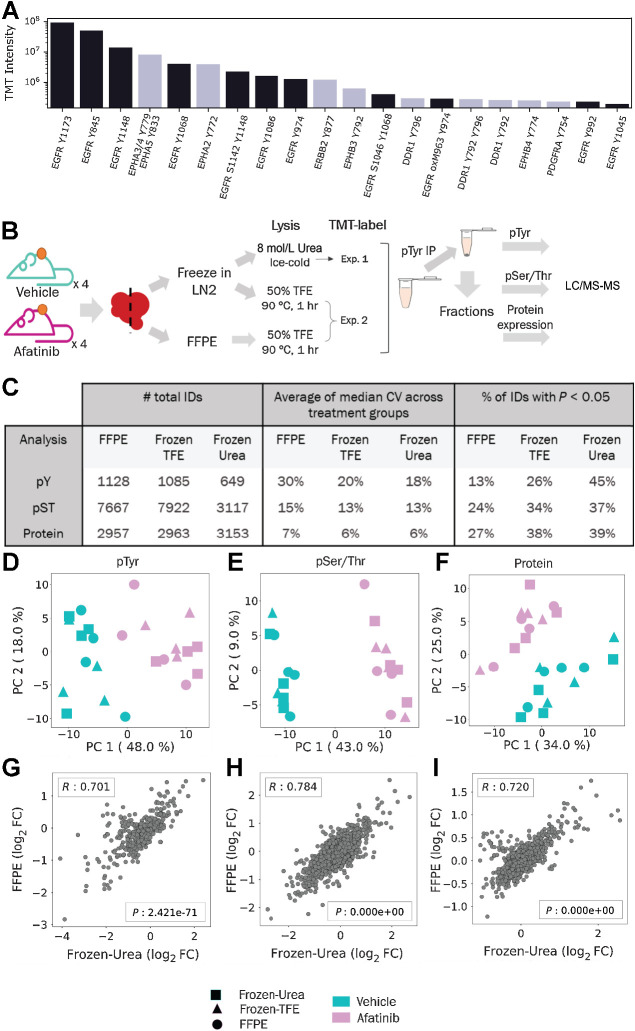Figure 4.
Comparison of pTyr, pSer/Thr, and protein levels in FFPE and flash-frozen tissues after treatment with afatinib. A, TMT intensities of the 20 most abundant phosphopeptides belonging to RTKs from FFPE GBM6 PDX tumor from Fig. 1E. TMT values were summed across all channels and plotted for each phosphopeptide. B, Schematic of experimental design to compare proteomics in FFPE and flash-frozen tissues. C, Number of unique phosphopeptides or proteins identified and quantified across different workflows with observed CVs and proportion of significantly different IDs between vehicle and afatinib treatments (n = 4 biological replicates). D–F, PCA of phosphopeptides or proteins quantified across FFPE, Frozen-Urea, and Frozen-TFE workflows: pTyr (n = 475 peptides; D), pSer/Thr (n = 2,283 peptides; E), and protein (n = 2,647 proteins; F) levels. Quantified levels were mean normalized and log2 transformed within each workflow before concatenating together. G–I, Correlation plots of fold changes (FC) observed between afatinib- and vehicle-treated groups in Frozen-Urea samples and their FFPE pairs: pTyr (G), pSer/Thr (H), and proteins (I). For each phosphopeptide or protein, fold changes were calculated between mean levels observed in groups treated with afatinib (n = 4) and vehicle (n = 4). R represents Pearson correlation.

